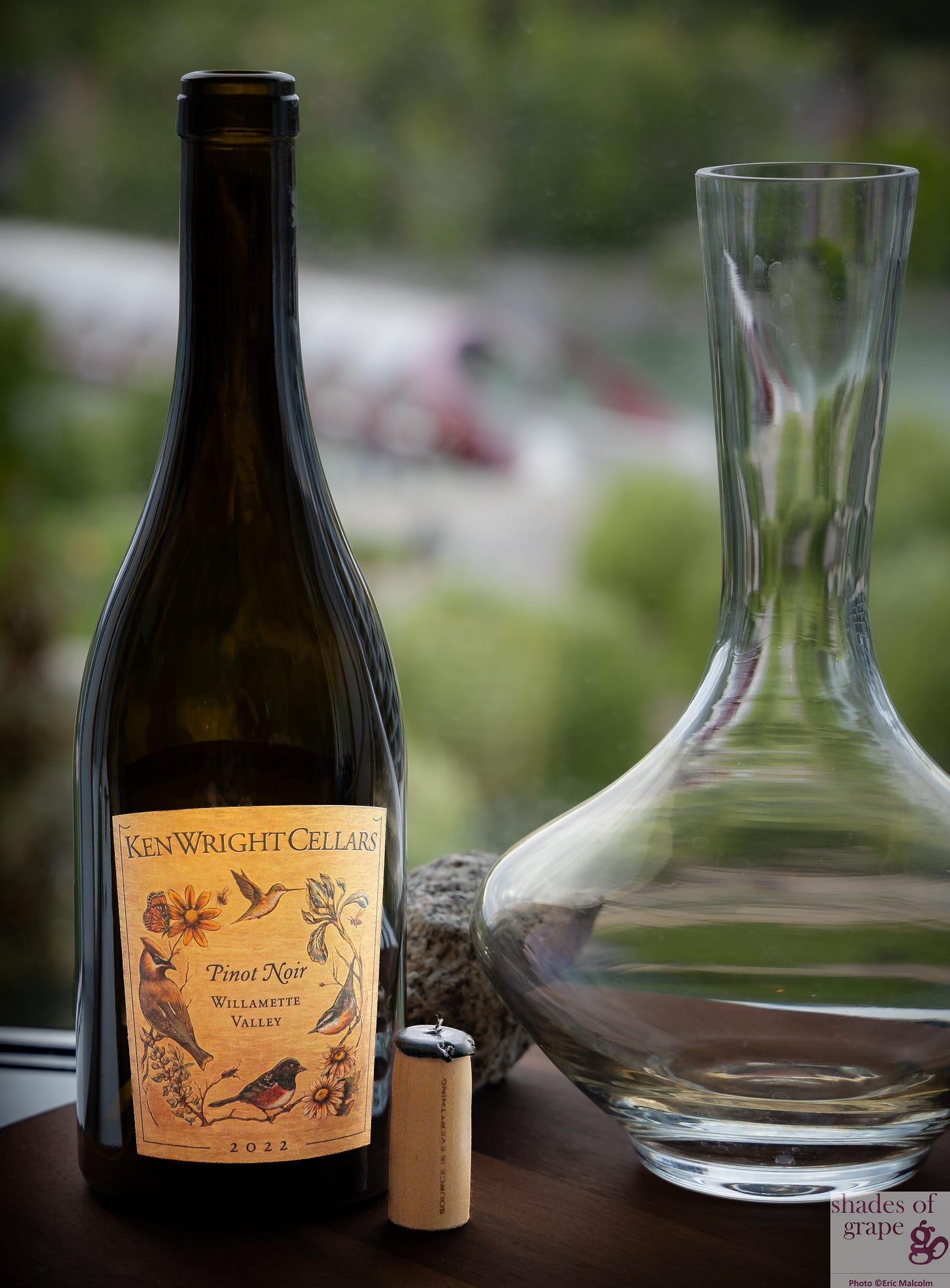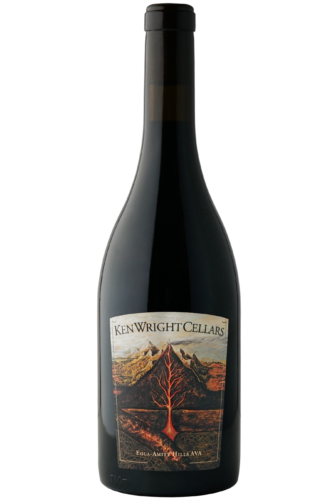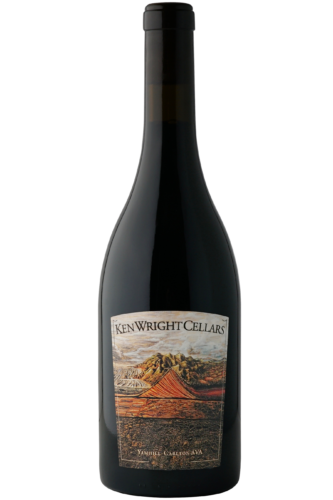Tag Archives: OregonWine
Recent Reviews from Owen Bargreen
Posted on July 3, 2024 in Reviews
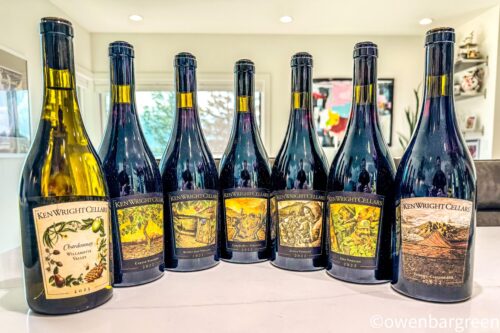
July 3, 2024
Today we share one of the greats from the Willamette Valley. The story of Ken Wright dates back to the 1980s as Ken worked as a waiter in Kentucky. At the restaurant Ken was exposed to the great wines of the world. After spending eight years winemaking in California for Ventana Vineyards and Talbott Vineyards, Ken was finally convinced to move to the Willamette Valley in 1986. He then started Panther Creek cellars and then founded his namesake winery in 1994. In 2001 he added Tyrus Evan, a Syrah based winery, to his portfolio.
The wines have been consistently great over the past ten years. I love the new 2023 Ken Wright Cellars ‘Willamette Valley’ Chardonnay (OB, 92) which is glorious for an entry level wine and shows loads of texture and tension. Even better is the 2022 Ken Wright ‘Carter Vineyard’ Pinot Noir (OB, 95) which is deep and concentrated, with some serious aging potential. Learn more about these fantastic wines at http://www.kenwrightcellars.com Here are the awesome new wines by Ken Wright.
2023 Ken Wright Cellars ‘Willamette Valley’ Chardonnay- The really good 2023 Ken Wright Cellars ‘Willamette Valley’ Chardonnay offers juicy nectarine on the palate, alongside salty orange peel, baked apple and brioche tones. Medium bodied and beautifully textured, enjoy now and over the next eight years. This is a steal at under 30 bucks retail. Drink 2024-2032- 92
Shop Willamette Valley Chardonnay
2022 Ken Wright Cellars ‘Willamette Valley’ Pinot Noir- Translucent in the glass, the medium-bodied 2022 Ken Wright Cellars ‘Willamette Valley’ Pinot Noir offers tart red currants and wild strawberry flavors alongside salty soils on the palate. Soft and neatly textured, enjoy now and over the next eight years to come. Drink 2024-2032- 91
Shop Willamette Valley Pinot Noir
2022 Ken Wright ‘Eola-Amity Hills’ Pinot Noir- The delicious 2022 Ken Wright ‘Eola-Amity Hills’ Pinot Noir shows a pretty core of red fruits on the plate, with stony minerals, red rose water, ash and shades of orange peel. Drink 2024-2032- 92
Shop Eola-Amity Hills AVA Pinot Noir
2022 Ken Wright Cellars ‘Yamhill-Carlton’ Pinot Noir- The outstanding 2022 Ken Wright Cellars ‘Yamhill-Carlton’ Pinot Noir comes from a range of sites from this AVA which was established back in 2004. This is juicy and generous Pinot Noir, offering ripe red cherry and red raspberry notes with cloves, lavender and hints of salty soils. Drink 2024-2032- 93
Shop Yamhill-Carlton AVA Pinot Noir
2022 Ken Wright Cellars ‘Canary Hill Vineyard’ Pinot Noir- The Canary Hill Vineyard is set 9.5 miles west of Salem, as this site was first planted back in 1983. Deeply colored in the glass, this delivers rich black raspberry and black cherry notes on the nose with baking spices, black truffle and shades of pie crust. The palate is deep and concentrated with good underlying verve and plenty of mouth-watering acidity. Really good to savor now, enjoy over the next ten plus years to come. Drink 2024-2036- 94
Shop Single Vineyard Pinot Noir
2022 Ken Wright Cellars ‘Bonnie Jean Vineyard’ Pinot Noir- The gorgeous 2022 Ken Wright Cellars ‘Bonnie Jean Vineyard’ Pinot Noir is sourced from this 18 acre site location that is planted on ancient marine sedimentary soils. This displays a wonderful core of salty red fruits on the palate, with kumquat rind, menthol, and shades of volcanic ash. Medium to full-bodied, with beautiful structure, this is drinking beautifully already — and has a long way to go. Drink 2024-2039- 94
Shop Single Vineyard Pinot Noir
2022 Ken Wright Cellars ‘Savoya Vineyard’ Pinot Noir- The Savoya Vineyard is located 3.5 miles north of the town of Carlton, Oregon. The vineyard is set on marine sedimentary soils, as there is a wonderfully salty essence to this wine. Tart pomegranate seed and red currant flavors mingle well with diatomaceous earth and its refined texture, with umami accents. Full-bodied and rich, enjoy now and over the next ten to fifteen years. Drink 2024-2036- 94
Shop Single Vineyard Pinot Noir
2022 Ken Wright Cellars ‘Carter Vineyard’ Pinot Noir- The 2022 ‘Carter Vineyard’ Pinot Noir comes from this Eola-Amity Hills location that dates all the way back to 1983. Mainly Pommard selection Pinot Noir, this opens with a beautiful bouquet of potpourri, red raspberry, tobacco leaf and shades of bergamot on the nose. The palate is soft and refined with a silky texture, exotic spices and great sense of weight and length. Rich and dense, with a soft mouthfeel, enjoy now and over the next fifteen years to come. Drink 2024-2039- 95
Shop Single Vineyard Pinot Noir
2022 Ken Wright Cellars ‘Shea Vineyard’ Pinot Noir- The 2022 Shea Vineyard Pinot Noir, comes from this acclaimed site which was planted by Dick Shea in the Yamhill-Carlton AVA. Richly colored, this shows a seamless texture on the palate, offering a gorgeous array of bright red fruits to mingle well with tobacco, blood orange zest, red rose water and shades of wet stone. Finishing long with bright red fruits and copious minerals, enjoy this beautiful wine now and over the next fifteen years to come. Drink 2024-2039- 95
Shop Single Vineyard Pinot Noir
I’ll Drink to That: Winemaker Ken Wright
Posted on June 12, 2024 in Press

Episode 465 of I’ll Drink to That! was released recently, and it features Ken Wright, the founder and winemaker of Ken Wright Cellars, located in Carlton, Oregon.
Ken Wright moved to Oregon in 1986, and over that period of time a lot has happened for wine in the state. Single vineyard bottlings have proliferated, additional AVAs have been introduced, significant land investments have been made, and winemaking techniques have been adjusted. Ken witnessed and participated in a lot of that change firsthand, and this interview reveals a lot of his thinking about how today is different than yesterday in Oregon, and why. It is also notable how he goes about the discussion, because Ken has a vocabularly that is fluent in the chemistry of wine as well as the biology of vines. He makes links in this interview between, for instance, the geologic setting of a vineyard, the soil health of that site, the impact of those on the wine’s fermentation, and the taste markers of the total combination in the finished glass of wine. And he further addresses aspects like climate and exposure, making clear how those affect the process before the grapes are picked, as well as what the consumer finds in the wine in the end. It is rare that someone explicitly makes the links between, for instance, oxygen in vineyard soil and a taste later in the wine, but Ken does so here. If you would like to better understand the diversity of Oregon in its different areas, the mindset changes that have happened there over time, and how those play out in the actual wines you see available on a retailer’s shelf, this is a great summary.
Listen to this episode:
I’ll Drink to That is the world’s most listened-to wine podcast, hosted by Levi Dalton. Levi has had a long career working as a sommelier in some of the most distinguished and acclaimed dining rooms in America. He has served wine to guests of Restaurant Daniel, Masa, and Alto, all in Manhattan. Levi has also contributed articles on wine themes to publications such as The Art of Eating, Wine & Spirits magazine, Bon Appetit online, and Eater NY. Check out his pictures on Instagram and follow him on Twitter: @leviopenswine
Perfect Pairings- When Wine & Food Are Better Together
Posted on June 6, 2024 in Press
—foodie fun creating memorable flavor harmony
Eveline Chartier, June 4, 2024
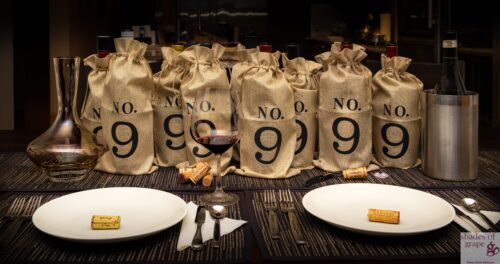
Photo by Eric Malcolm
The perfect food pairing can make a wine sing!
The goal is to have the wine and food taste better together than on their own. In other words, the sum is better than its parts. A great food pairing will bring out favorable elements in your wine and vice-versa!
Today I will guide you through this part art, part science process.
We will discuss three of the most common approaches to pairing. Keep in mind that preferred pairings will depend on the person experiencing it – this is very subjective and personal.
The key elements in food and wine that I want to discuss for pairings are:
- flavor profile
- flavor intensity
- wine’s body/food’s weight
PAUSE! I don’t understand flavor intensity in wine.
Think of a wine’s intensity as its sound volume on the nose or palate – how loudly it speaks to you! Just like food, some wines have more subtle flavors and aromas (mild cheddar cheese) while others have strong flavors (blue cheese).
Lastly, remember you can start with the food and find a wine to pair with it or vice versa.
Complementary pairings
This approach attempts to match one or more of the food and wine elements discussed above. For instance, if the wine has an anise/fennel flavor, it may pair nicely with food flavored with dried fennel. This would be a flavor profile pairing. A full-bodied wine with high intensity flavors would make a good pairing for a heavier meal with strong flavors. This would be both a flavor intensity and a body/weight pairing.
Contrasting pairings
In certain circumstances, opposites attract! Offsetting key food and wine elements results in greater overall balance. In other words, instead of matching we use opposing food and wine elements.
A good example is spicy (aka hot), bitter, or salty food pairing well with wines with sweetness. The higher the spice, the sweeter the wine should be! A spicy dish could also pair well with a low intensity wine, as the wine doesn’t compete with the food and provides a respite from the food intensity. Lastly, high acidity wines pair well with rich foods. The acidity in the wine cuts through the richness (aka fat or starch), acting as a palate cleanser or a reset after every sip.
Regional pairings
“What grows together goes together.” Pizza or lasagna pairs well with an Chianti. It is a way of saying that wines from a certain region pair very well with regional food. I learned in Austria that a Grüner Veltliner complements a Schnitzel or Goulash swimmingly! These pairings work because they either complement or contrast the key elements!
Can we walk through a specific wine?
Pairing the featured wine
Ken Wright Cellars Pinot Noir 2022 from Willamette Valley, Oregon is fresh and bright, yet it has an enticing earthiness – a contrast in itself! It also has flavors of red fresh cherry, blueberry, and blackberry, with the added complexity of earth and an especially attractive mushroom note ending with a hint of ‘fresh leather’. It has a medium flavor intensity.
Fresh leather, huh?
(Yes, that note was to get a reaction out of you!)
In this case I would zone in on the most alluring note: the mushroom!
This led me to mushroom based dishes (complementary). Since this wine has high acidity, it can hold up to rich foods (contrasting). My mind goes to mushroom risotto, mushroom soup, stuffed portobello mushrooms. Since the wine doesn’t have pronounced intensity, I would not stuff the pepper with a strong flavored cheese such as feta or chèvre nor strong flavored foods or spices. I think those would clash with the wine’s elegance.
Now my mouth is salivating.
Mine too.
Okay, but you would never pair this with fish for example?
Actually, my favorite pairing with salmon is Pinot Noir.
This Pinot Noir is medium body, matching the weight and texture of the salmon (complementary). Salmon is also an oily fish, so the wine’s high acidity would cleanse the palate after every sip producing a refreshing effect (contrasting).
What could backfire here?
If you glazed the salmon with teriyaki or hoisin sauce. As this is a dry wine, these sauces are sweeter than the wine, ergo breaking the rule that the wine needs to be sweeter than the food.
Okay, I am starting to understand this!
I will leave you with this: don’t be afraid to play around with pairings. Consider it a fun exploration! I have definitely flubbed the odd pairing. It can be tricky, particularly if you don’t know the wine. Luckily it IS just wine! Worst case scenario you choose another wine, or you finish the food then have the wine with cheese for dessert! No stress! Yay!
Ken Wright Cellars Pinot Noir 2022 from Willamette Valley, Oregon, USA
Style: New World Medium Body Red
Varieties: 100% Pinot Noir
This wine’s fresh and bright elements are beautifully contrasted by its earthy elements. It has fresh red cherry, blueberry, and blackberry, with the added complexity of earth and an especially attractive mushroom note ending with a hint of ‘fresh leather’. The tannins provide just enough grip to enhance the body without offsetting the elegance of the wine.
Best pairings: Mushroom Risotto, Mushroom Soup, Stuffed Portobello Mushrooms, Cedar-Plank Salmon, Pork Tenderloin, Soft or Semi-soft Cheeses: Brie, Havarti, or Gouda.
Serving Temperature: 14 degrees Celsius
Price: ~$37 (including 5% tax and shades of grape discount – for subscribers)
Serving Tips: Just enjoy!
SHOP KEN WRIGHT CELLARS PINOT NOIR
New 2022 Vintage Reviews from International Wine Report
Posted on April 22, 2024 in Reviews
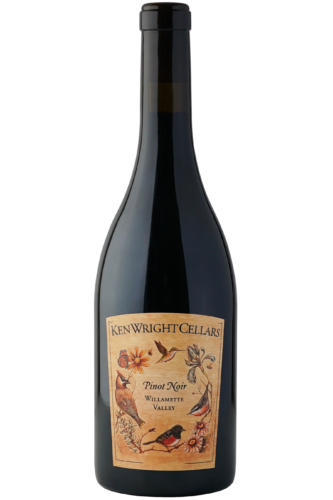
2022 Willamette Valley Pinot Noir
92 points
Easy drinking and downright delicious, the Willamette Valley Pinot Noir from Ken Wright sports a light to medium ruby core with a blueish rim. Aromatics of ripe blueberries, licorice root, crushed leaves, blood orange, and bitter herbs show more complexity and depth than they should at this price point. Rounded and medium to full-bodied, with a silky smooth mouthfeel, plush tannins, and a sporty bitter herb finish complete the wine. 2024-2030. Purchase this wine.
2022 Eola-Amity Hills AVA Pinot Noir
93 points
A bright transparent ruby core with a blue rim, the 2022 Eola-Amity Pinot Noir from Ken Wright gifts notes of mountain huckleberries, crushed black cherries, black licorice, bitter herbs, and lime zest. Medium-bodied in texture, it finishes with lovely tannins, elevated acidity, and a blue fruited note on the mid-palate. 2024-2032. Purchase this wine.
2022 Yamhill-Carlton AVA Pinot Noir
92 points
A jeweled light ruby core with a light brick rim, the 2022 Yamhill-Carlton Pinot Noir from Ken Wright is lush with earthy aromas of dried thyme and dusty country road alongside fruity notes of lemon zest, black cherries, and red currants. It’s medium-bodied, with fine-grained tannins, lemony acidity, and a long finish. 2024-2032. Purchase this wine.
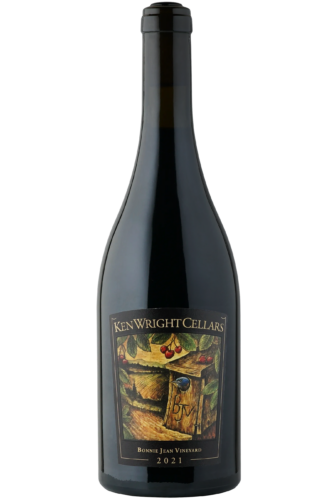
2022 Bonnie Jean Vineyard Pinot Noir
95 points
With a saturated red-ruby core with a neon purple rim in the glass, the 2022 Bonnie Jean Pinot Noir from Ken Wright gleams a bouquet of fresh purple flowers, sweet clove, black and red cherries, sweet tobacco leaf, and cedary herbs. I loved the sweet black cherry finish with a touch of grilled herbs that sits on the back palate. Full-bodied, it’s incredibly balanced with mature tannins that take on a youthful hold through the finish. 2025-2034.
(Sold out on Ken Wright Cellars bottle shop)
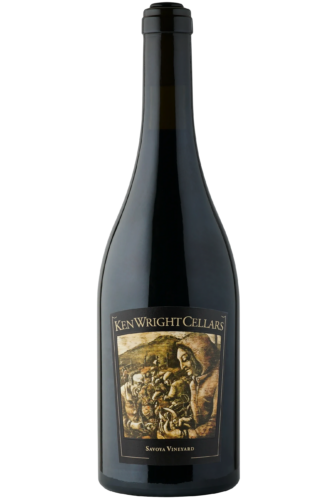
2022 Savoya Vineyard Pinot Noir
94 points
With a glistening medium ruby-brick core with a light pink rim, the 2022 Savoya Vineyard Pinot Noir is ripe with toasty spice, freshly crushed red cherries, pomegranate seeds, sweet vanilla, white chocolate, and wild forest herbs. Full-bodied, it’s a touch spicy on the palate, with notes of white pepper and ripe tannins that expand perfectly on the palate. Still a baby, so give it another year in the cellar. 2025-2034. Purchase this wine.
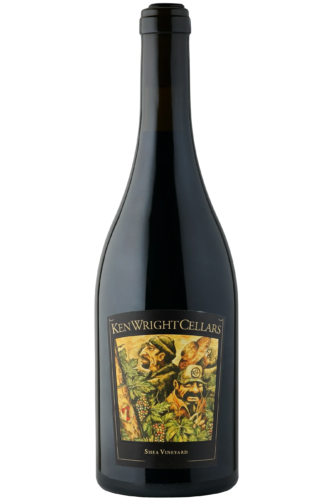
2022 Shea Vineyard Pinot Noir
96 points
Another stunning wine from master winemaker Ken Wright, this one coming from the famed Shea vineyard. It pours a bright, shimmering ruby core with a silvery rim in the glass. Rich notes of fresh strawberries, crushed raspberries, sweet vanilla beans, crushed red flowers, and shades of milk chocolate give way to elegant tannins, medium acidity, and a blue-fruit and white pepper finish. Medium to full-bodied with a crisp texture, it fills the palate with ripe tannins that expand wonderfully from start to finish. Highly recommended and editor’s choice. 2024-2034. Purchase this wine.
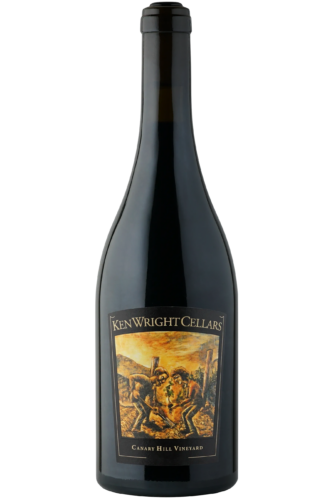
2022 Canary Hill Vineyard Pinot Noir
96 points
Another stunning wine by legend winemaker Ken Wright, this one the 2022 Canary Hill Vineyard Pinot Noir presents a gorgeous medium blue-ruby core with a glistening neon ruby rim. More elegant and encompassing than its siblings, it’s brooding with aromas of crushed huckleberries, blueberry compote, sweet Christmas spice, Early Gray tea, and grilled lemon peel. Medium-bodied, it maintains great power and purity, with supple, rounded tannins and a brisk lift on the finish. Highly recommended and editor’s choice. 2024-2034.
(Sold out on Ken Wright Cellars bottle shop)
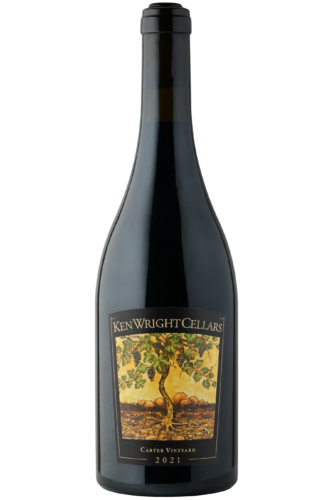
2022 Carter Vineyard Pinot Noir
95 points
A youthful deep neon blue-ruby core with a light pink rim, the 2022 Carter Vineyard Pinot Noir from Ken Wright improves with a little air after opening and exposes aromas of dusty road, crushed marionberries, dried strawberries, toasted vanilla bean, and a touch of grilled meat that adds complexity and makes it extremely interesting. It’s an intricate wine on the nose and palate that seems to morph over time in the glass. It’s savory and spicy on the finish, with a lot of saline shining through. 2024-2034.
(Sold out on Ken Wright Cellars bottle shop)
2022 & 2021 Vintage Reviews from Jeb Dunnuck
Posted on March 25, 2024 in Reviews

New Reviews from Jeb Dunnuck in recent article:
2021 Willamette Valley and Oregon Round Up Activity
Click to view article online (must be a subscriber for full article)
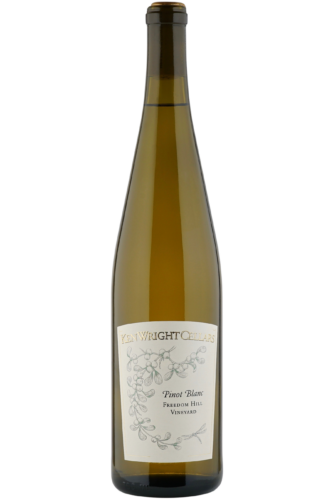
2022 Freedom Hill Vineyard Pinot Blanc- 91 points
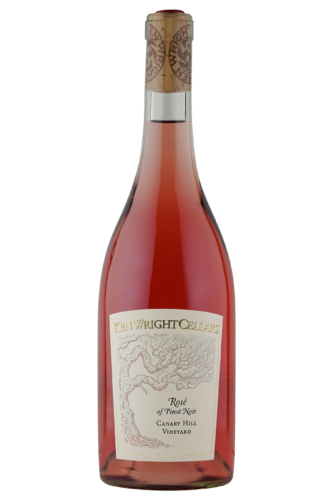
2022 Canary Hill Vineyard Rosé- 91 points
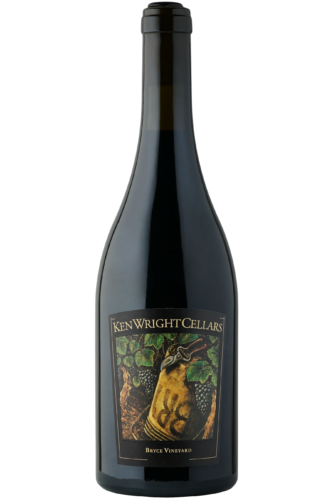
2021 Bryce Vineyard Pinot Noir- 97 points

2021 McCrone Vineyard Pinot Noir- 96 points

2021 Shea Vineyard Pinot Noir- 96 points
WineBusiness Monthly to Honor Three of the Industry’s Top Leaders at Annual Wine Industry Financial Symposium Dinner
Posted on October 20, 2023 in Press
Oct 17, 2023
NAPA, CA — WineBusiness Monthly, the industry’s leading publication for wineries and growers, will honor three of the wine industry’s most influential and inspiring players at the WineBusiness Leadership Dinner, held Tuesday, November 14 at the CIA Copia in the Napa Valley. For more information on the symposium, please visit www.wineindustryfinancial.com.
The Wine Industry Financial Symposium Leadership Dinner celebrates those individuals who have made positive differences at their companies and in the wine community. Each year, WineBusiness Monthly names their Wine Industry Leaders in the November issue of the publication, and this dinner will honor a select few who have made the greatest strides in contributing to the wine industry’s collective success.
This year, WineBusiness Monthly is honoring David Duncan, proprietor, chairman and CEO af Silver Oak and Twomey Cellars; Emma Swain, CEO of St. Supery; and Ken Wright, proprietor and winemaker for Ken Wright Cellars. To obtain tickets, email info@wbmevents.com.
David Duncan

As proprietor/chairman and CEO of Silver Oak & Twomey Cellars, Duncan has been the driving force behind so much of the company’s growth and move toward sustainability. In 2015, Silver Oak purchased The Oak Cooperage in Higbee, Missouri to make Silver Oak the first North American winery to own and operate an American oak barrel cooperage. Just two years later, Silver Oak built a new winery in Alexander Valley, one that uses cutting-edge technologies and achieved Platinum LEED certification. All this, and Silver Oak & Twomey Cellars is well-known within the North Coast as a great place to work, and has partnered with The Veraison Project to bring new faces to the wine industry through a year-long apprenticeship program.
Duncan was chairman of the NVV Board in 2015 and co-chaired Auction Napa Valley in 2014 – it’s highest-grossing year. In 2008 David and his brother Tim also co-chaired the NVV’s Premiere Napa Valley, a wine auction for the trade. He served as board member and past Chairman of the St. Helena Hospital Foundation; in 2016 his fundraising efforts led to a banner year for the St. Helena Hospital Gala.
Emma Swain

St. Supéry Estate Vineyards and Winery CEO Emma Swain has more than 25 years of experience in the wine industry. She started in finance, becoming a certified public accountant before joining Niebaum-Coppola Winery, working with the team to reunify the historic Inglenook properties. She then worked at Sebastiani Vineyards and Winery for 13 years as COO and helped reposition the fourth-generation family winery from its high-volume table wine to one of a respected high-quality producer. Swain joined St. Supéry Estate Vineyards and Winery and became CEO in 2009; during her tenure the winery has undergone a transformation in quality with extensive investments in the vineyard, winery and technology.
Swain is a current board member of Visit Napa Valley, the Wine Market Council and Napa Valley Vintners, having previously served a chair of the NVV, and continues supporting numerous local non-profits.
Ken Wright
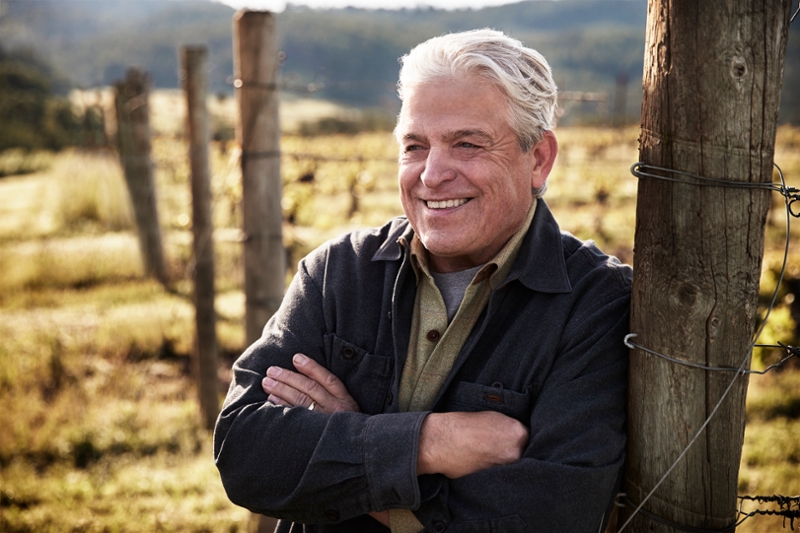
In 1986, Ken Wright moved to McMinnville and started Panther Creek Cellars. His concept of focusing on vineyard-designate bottling began during those years and was cemented as a core philosophy in 1994 when Ken Wright Cellars was founded in historic downtown Carlton. Ken now makes a single vineyard bottling from 13 vineyard sites and is known as a pioneer of Oregon Pinot Noir.
Ken and Karen continue to invest in their communities of Carlton and Yamhill through countless hours of non-profit volunteerism. The dynamic duo are also founding members of ¡Salud! A program that provides healthcare for the seasonal vineyard and winery workers. Their philanthropy & commitment to Oregon wine was recognized when there were announced as 2012’s Oregon Wine People of the Year.
For more information about the Wine Industry Leadership Dinner and the Wine Industry Financial Symposium, visit www.wineindustryfinancial.com.
High Scores from Wine Enthusiast
Posted on June 29, 2023 in Reviews
We have been honored with the following scores from Wine Enthusiast on our 2021 AVA Series Pinot noir!

2021 Eola-Amity Hills AVA Pinot Noir
95 points
“This is a Goldilocks special, because the fruit, alcohol, acidity and tannins are just right. Rainier cherry and lavender aromas are joined by smaller notes of leather and a new cedar chest drawer. The wine’s cassis, orange pith and smoky Lapsang souchong tea flavors float on a soft, smooth texture. Editors Choice.” — Michael Alberty, WE

2021 Yamhill-Carlton AVA Pinot Noir
92 points
“Tangy boysenberries and raspberries mingle on the nose with aromas of cinnamon spice and orange zest. The medium-bodied wine’s strawberry pie, fresh basil and balsa flavors are supported by silky tannins and lemony acidity. Balanced refreshment.” — Michael Alberty, WE
New 2021 Vintage Reviews from Wine Spectator
Posted on May 12, 2023 in Reviews

We have been honored with the following scores released by the Wine Spectator on a selection of our 2021 vintage single vineyard Pinot noir! The tasting notes below were crafted by Tim Fish, the senior editor at Wine Spectator.

2021 Bonnie Jean Vineyard Pinot Noir
94 points
Refined and polished, with elegantly structured raspberry, fresh violet, sandalwood and other dusky spices, finishing with fine-grained tannins. Drink now through 2032. 679 cases made.— Tim Fish, WS

2021 Carter Vineyard Pinot Noir
94 points
Graceful and polished, with multilayered cherry and blueberry flavors that take on cinnamon and fresh earth accents. Ends with refined tannins. Drink now through 2031. 667 cases made.— Tim Fish, WS

2021 Latchkey Vineyard Pinot Noir
92 points
Snappy with tension and lively acidity, this red bursts with raspberry, cherry blossom and spice flavors that glide toward refined tannins. Drink now through 2031. 390 cases made.— Tim Fish, WS

2021 McCrone Vineyard Pinot Noir
93 points
Well-sculpted and expressive, with detailed raspberry, pomegranate, orange peel and dusky spice flavors that gather richness and tension on the finish. Drink now through 2030. 538 cases made. — Tim Fish, WS

2021 Shea Vineyard Pinot Noir
93 points
Handsomely structured and detailed, with expressive rose petal, raspberry and blueberry-and orange-tinged tea accents that build tension toward medium-grained tannins. Drink now through 2030. 1,432 cases made. — Tim Fish, WS
Shop Ken Wright Cellars Single Vineyard Pinot Noir
The 10 Best New Pinot Noirs From Oregon’s Willamette Valley, One of the Country’s Top Wine Regions
Posted on April 14, 2023 in Uncategorized
Some New World reds that would feel at home in the Old.
With over 19,000 acres of Pinot Noir planted, Oregon’s Willamette Valley has become one of the United States’ premiere growing regions for the red grape from Burgundy since it was first planted there in the 1960s. That is more than double the amount of all other varieties combined growing there, highlighting the fact that this 100-mile-long region between the Cascade Mountains and the Coast Range is prime Pinot Noir country. In fact, more than 80 percent of all the Pinot Noir cultivated in the state is grown in the Willamette Valley, which is home to over 700 wineries.
To the west, the Coast Range shelters vineyards running along the Willamette River from frigid Pacific air and rainstorms, while on the opposite side the Cascade Mountains provide a barrier to the arid, desert-like climate of eastern Oregon. Temperate summers with cool nights, sunny autumns, and a combination of volcanic and sedimentary soils offer perfect conditions for ripening grapes with complex flavors and vivid acidity. Thanks to the number of French families who have put down roots here, Willamette has been called the Burgundy of the Pacific Northwest, producing New World versions of Pinot Noir that have been likened by many to those from their home region. Concentrated yet elegant, these will pair well with roast or fried chicken, grilled pork, risotto with mushrooms, or pan seared veal chops.
Ken Wright and his family founded Ken Wright Cellars in 1994 in downtown Carlton, and since that time he has been very involved in town planning for this historic community. He currently makes 13 different single vineyard bottlings in the northern Willamette Valley. The 2018 Shea Vineyard Pinot Noir is ruby colored with aromas of blueberry, dried herbs, cinnamon, and freshly picked black cherry. It has flavors of cranberry, pomegranate, and red raspberry with pleasant touches of creosote and licorice. Drink now or through 2033.
Romping Through the 2021 Ken Wright Pinots
Posted on March 23, 2023 in Press, Reviews

The winery tells me that all the 2021 single vineyard wines will be released over the next few months. Carter and Canary Hill may already have sold out. It’s worth a special salute to Ken that his prices have barely budged in years and a further discount (down to $55) is offered to club members. As always with young wines, let ‘em breathe!
Here are my notes and scores:
Ken Wright 2021 Bonnie Jean Vineyard Pinot Noir
Young as it is this wine already has the rich, dense and expressive aromas of a wine with a half decade behind it. The alcohol remains low, which allows more subtlety and elegance across the entire 2021 portfolio. Lightly cooked cherries, baking spices and delicate touches of floral highlights cut across the palate. One fifth of the barrels were new. The youth shows mostly in the edgy tannins, which will smooth out with another couple of years in the bottle or aggressive aeration.
679 cases; 12.8%; $65 (Yamhill-Carlton) 92/100
Ken Wright 2021 Carter Vineyard Pinot Noir
Tart, racy raspberry fruit shines here, backed with juicy acids that mix Meyer lemon and blood orange. Beautifully defined and precise, this wine should cellar quite well indefinitely. Meanwhile, decant it and enjoy it for its ebullient youth.
667 cases; 13.3%; $65 (Eola-Amity Hills) 92/100
Ken Wright 2021 Savoya Vineyard Pinot Noir
This fresh and berry-laden wine bursts forth with a mix of rhubarb, cranberries and raspberries. The acids are softened and smooth, underscoring a palate-prickling hint of jicama. Complex and captivating, this elegant wine continues to expand and add layers as it breathes open.
503 cases; 13.2%; $65 (Yamhill-Carlton) 93/100
Ken Wright 2021 Shea Vineyard Pinot Noir
Now more than three decades since it was first planted, the Shea vineyard is as iconic in Oregon as any site can claim to be. Dozens of wineries seek these grapes, and it’s a pleasure to see what a veteran such as Ken Wright can do with them. He keeps the alcohol low, yielding a bright, savory, spicy wine anchored in brambly berries and tannins reminiscent of herbal tea. Complex and a bit unyielding, this is a wine to aerate aggressively if you are planning to drink it any time soon. Tasted on the second day it was slowly gaining volume. My 3/3/23 Wine of the Week.
1432 cases; 12.8%; $65 (Yamhill-Carlton) 94/100
Ken Wright 2021 Canary Hill Vineyard Pinot Noir
Among the oldest vines (planted 1983 in Ken Wright’s single vineyard series, Canary Hill also benefits from its Pommard clones. It’s juicy and fresh, crisply defined with flavors of just-picked wild berries backed with vivid citrus. Aging in 20% new French oak puts a lightly toasty frame around it, nicely balanced against the ripping acids. I would guess its best days are a half decade away.
608 cases; 13.5%; $65 (Eola-Amity Hills) 94/100
